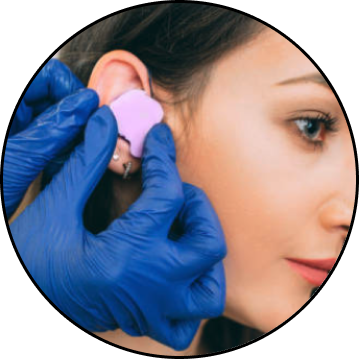A perforated eardrum can be a painful experience if not treated properly in time as advised by a trained professional. It is known more commonly in the medical profession as a tympanic membrane perforation. It is characterized by a tear in the thin tissue separating your ear canal from the eardrum or middle ear.
This can result in hearing loss. If your eardrum is perforated, the middle ear is susceptible to various infections or injuries that could become incurable.
Luckily, perforated eardrums take a few weeks to heal without treatment. In certain cases, ruptured eardrums need surgical repair to return to 100% function.
What Causes a Perforated Eardrum?
Perforated eardrums are commonly caused by:
- Otitis media or middle ear infection – a build-up of fluid that increases pressure on the middle ear causing the eardrum to tear.
- A hard blow to the head or ear such as from sports injuries.
- Sudden loud noises like deafening explosions.
- Rapid air pressure changes inside the ear arising from scuba diving or air travel.
- Injury from objects forced into your ears like earbuds.
Perforated Eardrum Symptoms to Look For
A few signs and symptoms of ruptured eardrums are:
- Pain in the ears
- Clear pus drainage from the ear
- Loss of hearing
- Nausea or vomiting
- Vertigo or a spinning sensation
- Ringing in the ear or tinnitus
Who is at Risk?
Since eardrum perforation occurs from middle ear infection, people vulnerable to middle ear infections are also at risk of developing this condition. The ones most likely to fall victim to eardrum perforation usually include young adults and children who have had middle ear infections at least once during infancy. In Australia, such cases occur a lot amongst the Aboriginal and Torres Strait.
What Can I Do to Avoid a Perforated Eardrum?
There are several things that you can do to avoid having a perforated eardrum. You should make sure to protect your ears during flights. If you have a cold or an allergy that causes ear congestion, it is perhaps best not to fly.
If you do not have much of a choice, make sure you keep your ears clear during take off and landing. This can be done by yawning, chewing gum, or through pressure-equalizing earplugs. You can also try the Valsalva maneuver – gently blow while pinching your nostrils and keeping your mouth shut.
You should also protect yourself from foreign objects and keep things from going too deep into your ears, especially when using things like q tips when you’re cleaning out your ears.
Middle ear infections should be treated quickly. Stay alert for signs and symptoms of middle ear infection, which include reduced hearing, nasal congestion, ear aches and fevers. Children who have middle ear infections usually rub or pull their ears. Seek medical advice from your doctor to avoid potential damage to their eardrums.
Make sure to guard against loud noises. You should wear earmuffs or earplugs to protect your ears from damage at the workplace or during outdoor activities if you know there will be loud noises nearby.
So while you may be an easy target for perforated eardrums, there are simple steps (and remedies) out there that could save you from long-term damage.
